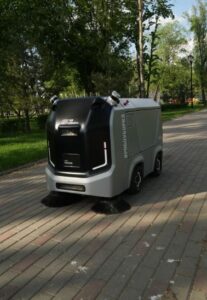The rush towards automation is truly changing every aspect of life in the world, and this also includes the road where autonomous lorries are moving from being an experiment to becoming a potential regular sight in some parts of the logistics industry.
Despite all the promises that they bring, there’s still one crucial question to answer: What happens when you are involved in an accident with a driverless truck and it’s not your fault?
In the first place, you know that you have a legal route in the event of injuries, as you can reach out to personal injury solicitors for advice and support. The problem is that, as driverless technology starts to get a grip on the transport sector, the line between what’s been done by human error and what’s been caused by a machine is getting fuzzy. So, who is to blame in the age of driverless vehicles?

Image Source: Unsplash – CC0 Licence
The Human Factor in Commercial Vehicle Collisions
For decades, liability in commercial road accidents has largely centred on human behaviour. Whether through distraction, fatigue, or delayed reaction times, driver error remains one of the most common causes of serious collisions on UK roads. More than 40% of heavy goods vehicle accidents can be linked to human mistakes or slow reflexes.
With such stark figures, it’s clear why fleet operators and insurers are increasingly looking to automation as a means of reducing human fallibility.
Autonomous systems don’t suffer from exhaustion or lose concentration. By removing the variability of human behaviour, driverless commercial vehicles promise a future where precision and data replace instinct and fatigue.
How Automation Reduces Liability Risks
One of the most immediate benefits of self-driving trucks lies in their ability to record and respond to their surroundings with absolute precision. Equipped with a network of cameras, radar and lidar sensors, these vehicles continuously gather data that can later be used to establish exactly what happened in the seconds before an incident. For businesses, that level of transparency can significantly reduce the risk of false or exaggerated claims, since the evidence is no longer reliant on human recollection.
Automation also has the potential to transform how fleets manage their vehicles. Many modern trucks already use telematics systems that monitor performance and flag maintenance needs automatically. As autonomous technology develops, these predictive systems are expected to become even more advanced, such as by detecting mechanical issues before they cause breakdowns or accidents.
Route planning is another area where automation offers an advantage. Unlike a human driver working under time pressure, an AI-driven system can calculate itineraries based on traffic conditions, weather data and vehicle size, avoiding high-risk routes and minimising the chances of collision. It’s a shift that doesn’t just protect the vehicle and its cargo; it also reduces operational risk and the likelihood of corporate liability when accidents do occur.
The arrival of autonomous vehicles upends the picture on liability. When a self-driving lorry is involved in a crash, the investigators have to consider not just what the human supervisor might have done, but also how the vehicle’s sensors, software and maintenance systems were performing at the time. And a lot of the time the question is no longer ‘who was driving?’ but ‘was the technology working properly?’
This change brings a whole new level of complexity to the insurance and legal landscape.
Even though the human element might be fading from behind the wheel, the fact is that accountability is going to be on the road somewhere.






